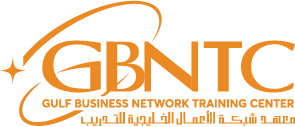Innovations in home security continue to evolve, bringing features that enhance safety while adding a touch of modern convenience. One such advancement is the implementation of motion-activated locking mechanisms, which offer auto unlock capabilities, significantly elevating the convenience factor for users. This technology caters to those who value both security and ease of access, allowing homeowners to step into their space without fumbling for keys.
However, while these systems boast impressive attributes, they also come with caveats that warrant careful examination. The allure of seamless entry cannot overshadow potential drawbacks such as false alerts or power dependency. Weighing the benefits alongside the challenges reveals a multifaceted picture of motion-activated security, making it essential to understand both sides before making a decision.
Assessing the Security Benefits of Motion Sensor Locks
Innovative locking solutions incorporating auto unlock features offer an impressive level of security to property owners. These advanced systems utilize advanced technology to detect authorized individuals approaching, allowing for seamless entry without the need for physical keys. For further exploration of security options in today’s evolving market, consider checking out this resource.
Enhanced access control is another significant advantage found in these locks. By integrating smart technology, users can easily monitor entry points, receiving notifications of any movement or attempts to access restricted areas. This capability empowers individuals to respond to potential threats quickly, considerably improving overall safety. However, it’s essential to be mindful of battery draw, as consistent operation may deplete power sources at an accelerated rate.
While convenience factors associated with these locking mechanisms are undeniable, there is also the potential for accidental trigger scenarios. Sensitivity settings can sometimes lead to false activations, which may frustrate users. Balancing the sophisticated smart integration with user preferences is key to optimizing functionality without compromising security.
Overall, these innovative locking solutions serve as a formidable deterrent against unauthorized access while offering user-friendly features that enhance daily routines. By prioritizing both security and convenience, property owners can enjoy peace of mind in their environments.
Understanding Maintenance Requirements for Motion Sensor Locks
Regular maintenance is crucial for keeping automatic locking systems in optimal condition. Users should be aware of specific upkeep tasks that ensure longevity and reliability. Routine check-ups can help detect issues early and maintain the device’s performance. For more insights into effective care for these systems, visit this guide.
One key aspect is the battery draw; devices generally rely on batteries for power. Monitoring the charge level ensures they function properly, as a low battery can compromise the convenience factor. Additionally, cleaning sensors periodically prevents dirt buildup, which may lead to accidental triggers. Regular examination of the access control system is also recommended to ensure door presence is accurately detected, minimizing malfunctions.
Another consideration is smart integration with home automation systems. Regular updates and checks on compatibility can enhance functionality, providing a seamless user experience. Neglecting these aspects can lead to performance issues, making maintenance a vital part of ownership.
Evaluating Cost Implications of Motion Sensor Locks vs. Traditional Locks
In the discussion of locking mechanisms, analyzing the financial aspects of automatic entry solutions versus conventional systems reveals significant differences. While traditional locks typically involve a one-time purchase price, the integration of smart technology can lead to ongoing expenses. For instance, smart locks frequently depend on battery power, raising concerns about battery draw and replacement costs over time. Further information can be found at https://ablelocknkey.com/.
Additionally, the convenience factor of automatic unlocking contributes to its appeal. However, homeowners must consider potential costs related to accidental trigger events that may necessitate repairs or replacements. Installation expenses for sophisticated access control systems may also be higher than for standard locks, although the long-term security benefits could justify the investment. Evaluating these financial implications can guide homeowners in making informed decisions tailored to their specific needs and preferences.


Comments are closed